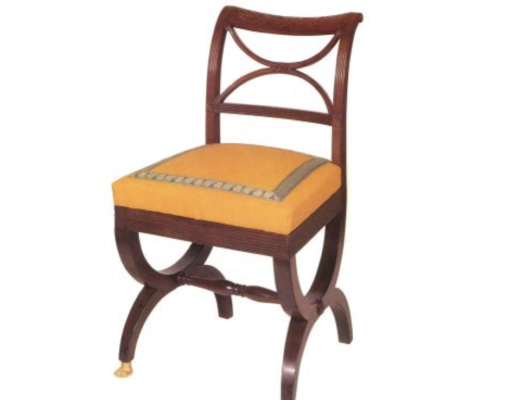The Renowned Collection
Curule Chair
The term “curule” (CYOO-rool) refers to the intersecting half circles that form this chair’s base and back.
Attributed to Duncan Phyfe (b. Scotland, 1770-d. New York City, 1854)
Curule chair, from a set of twelve chairs and a sofa, c. 1815 (with later repairs)
Mahogany, tulip poplar medial braces, white pine seat frames, cane
(some replaced), modern wool moreen upholstery with modern silk tape
Gift of funds from Lila Acheson Wallace and other donors F76.4
The form derives from Greco-Roman examples made of metal, re-interpreted by 18th- and early 19th- designers including Duncan Phyfe, whose c. 1816 sketch of a curule chair survives. The geometry created a visual delight (and woodworker’s nightmare) of curve and counter-curve, and served as a recognizable, political reference to those Early Republics.
Markings on these chairs indicate that they once belonged to a set of 24, plus at least one sofa. Their history of ownership ties them back to investment broker Nathaniel Prime (1768-1840), whose northern Manhattan mansion (now razed) along the East River was scaled and furnished to impress. What was “modern” c. 1815 became moderne in the 1920s, when Neoclassicism came into vogue again and this set was repaired by Prime’s descendants for continuous use.
By the time Boscobel acquired the twelve chairs and sofa in 1976, some pieces from the set had been separated, and an additional sofa and footstools had been made to match. Along with the curule furniture made for Thomas Pearsall now at the Metropolitan Museum of Art, Boscobel’s Prime set remains the most complete of its type.
